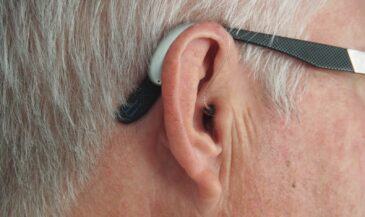By Dr. Christopher Kent
A challenge to the modern chiropractor is objective documentation of a favorable clinical response. The development of standards of care, criteria for the appropriateness of care, and the validation of chiropractic methods all depend upon the availability of reliable outcome assessments.
A variety of methods for validating chiropractic procedures have been proposed. These include decision analysis algorhythms, meta-analysis, consensus, and other methods. (1,2,3,4,5,6,7) Some authors have suggested the use of pain questionnaires as outcome assessments for chiropractic care. (8) Such an approach, however, is plagued with limitations.
There are several significant shortcomings to pain-based models for outcome assessment:
1. Such schemes assume that the objective of chiropractic care is symptomatic treatment of pain.
2. Pain is a highly subjective, private sensation which cannot be directly measured or observed.
3. In some instances, unless the pain is robust enough to restrict activities of daily living, a “false negative” could result.
4. Pain criteria cannot be applied if the patient has symptoms other than pain, or no symptoms at all.
5. Pain criteria are useless in the evaluation of asymptomatic patients undergoing maintenance or reconstructive care.
If the objective of chiropractic care is the correction of vertebral subluxations, criteria must be developed which reliably evaluate their presence and correction. I suggest that the following be used when considering outcome assessments:
- The procedure should reliably measure a generally accepted manifestation of the vertebral subluxation complex.
- The information obtained should be useful in the planning of clinical strategies, such as the need for adjustment, frequency of visits, and determination of indications for maintenance care.
Traditional chiropractic philosophy defines the vertebral subluxation terms of four criteria:
1. Loss of juxtaposition of a vertebra with the one above, the one below, or both
2. Occlusion of an opening
3. Nerve impingement
4. Interference with the transmission of mental impulses. (9)
Contemporary definitions have proposed the term “vertebral subluxation complex,” which consists of five components:
1. Spinal kinesiopathology
2. Neuropathology
3. Myopathology
4. Histopathology
5. Biochemical changes. (10)
The “vertebral subluxation complex” model also describes tissue specific manifestations, including:
1. Osseous component
2. Connective tissue involvement, including disc, other ligaments, fascia, and muscles
3. The neurological component, including nerve roots and spinal cord
4. Altered biomechanics
5. Advancing complications in the innervated tissues and/or the patient’s symptoms. This is sometimes termed the “end tissue phenomenon” of the vertebral subluxation complex. (11)
Many technologies exist to assess the biomechanical and physiological changes associated with the subluxation. Unfortunately, the reliability of many of these procedures has not been adequately explored. In some instances, inappropriate designs leading to improper conclusions plagued many reliability studies. (12)
The following list is illustrative of some techniques used by chiropractors for analyzing manifestations of the vertebral subluxation complex. They have arbitrarily been divided into two categories, biomechanical and neurophysiological. I readily acknowledge that there is overlap in many of these procedures:
Biomechanical
- Postural analysis
- Static palpation
- Motion palpation
- X-ray spinography
a. static
b. functional (including videofluoroscopy) - Computed tomography
- Magnetic resonance imaging
Neurophysiological
- Orthopedic examination
- Neurological examination
a. reflexes
b. muscle tests
c. dermatome testing
d. functional leg checks - Skin temperature examination
a. thermography
b. NCM/NCGH, Nervoscope, Thermeter, etc.
c. DTG, Chirometer, etc. - Electrophysiological procedures
a. electromyography
b. somatosensory evoked potentials
c. nerve conduction velocity
d. EEG, brain mapping
e. Current perception testing (e.g. Neurometer).
References
1. Shekelle P: “Current status of standards of care.” Chiropractic Technique, Aug 1990 2(3):86.
2. Coulter I: “A ‘reasoned’ approach to the validation of chiropractic methods.” Chiropractic Technique, Aug 1990 2(3):98.
3. Kaminski M: “Evaluation of chiropractic methods.” Chiropractic Technique, Aug 1990 2(3):107.
4. McMichael R, Poortinga G, Powell J et al: “Reliable standards of care are determined by consensus of those who provide that care.” JMPT, Mar 1991 14(3):217.
5. Kaminski M, Boal R, Gillette R et al: “A model for the evaluation of chiropractic methods.” JMPT, Apr 1987 10(2):61.
6. Triano J: “A model for standards of care: manipulative procedures.” JMPT, Jan 1990 13(1):58.
7. Hansen D: “Outcomes assessment in clinical decision making.” Proceedings of the 1991 ICSM:5.
8. “Chiropractic outcome measures.” NY State Chiropractic Association Newsletter 1991 18(3):19.
9. Stephenson R: Chiropractic Text-book, Davenport, IA. The Palmer School of Chiropractic, 1927.
10. Flesia J: Renaissance — “A Psychoepistemological Basis for the New Renaissance Intellectual,” Colorado Springs, CO. Renaissance International, 1982.
11. Herfert R: “Communicating the Vertebral Subluxation Complex,” East Detroit, MI. Herfert Chiropractic Clinics, 1986.
12. Haas M: “The reliability of reliability.” JMPT, March 1991 14(3):199.






























































































































































